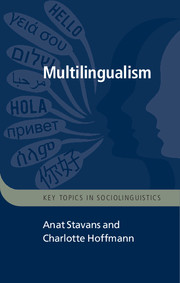Book contents
- Frontmatter
- Dedication
- Contents
- List of Figures and maps
- List of Tables
- Acknowledgements
- Introduction
- Part I Global and societal issues in multilingualism and trilingualism
- Part II Construing individual multilingualism
- Glossary
- References
- Author index
- Places and languages index
- Subject index
- References
References
Published online by Cambridge University Press: 05 February 2015
- Frontmatter
- Dedication
- Contents
- List of Figures and maps
- List of Tables
- Acknowledgements
- Introduction
- Part I Global and societal issues in multilingualism and trilingualism
- Part II Construing individual multilingualism
- Glossary
- References
- Author index
- Places and languages index
- Subject index
- References
Summary

- Type
- Chapter
- Information
- Multilingualism , pp. 272 - 293Publisher: Cambridge University PressPrint publication year: 2015

